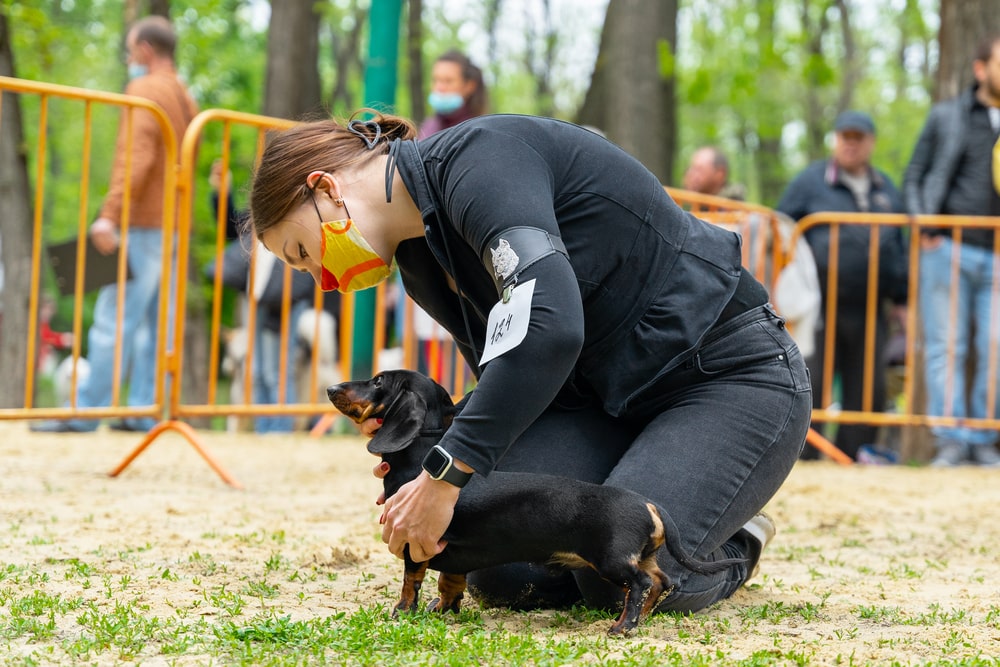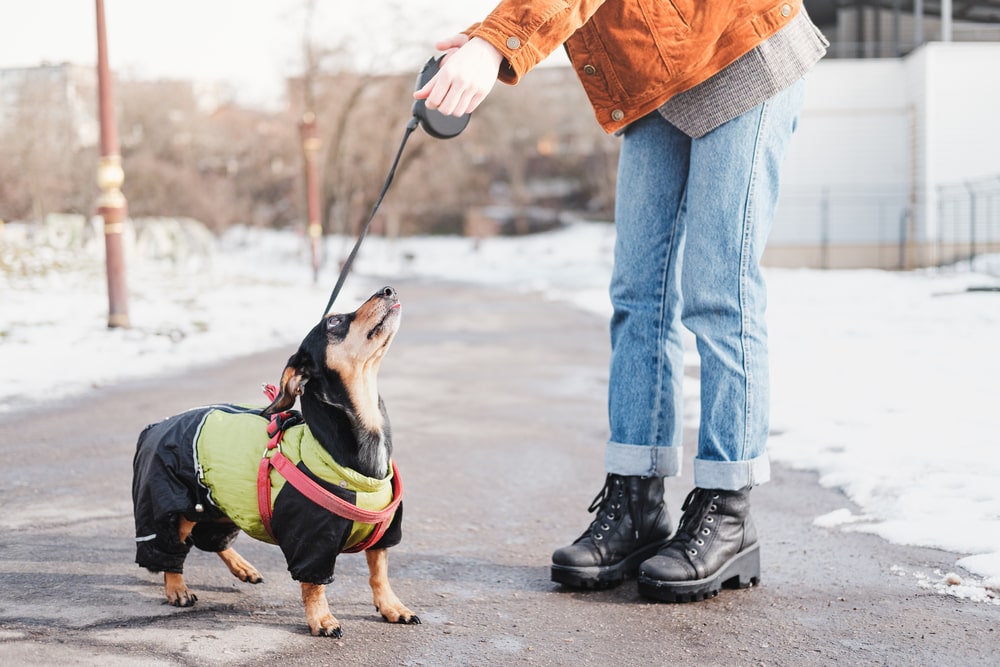Picture this: you’ve got yourself a Dachshund, the cutest little furball known for their loyalty, affection, and playful nature. But hey, let’s be real here – they’ve also got a mischievous streak that can make training a bit of a challenge.
We’re here to lend you a helping paw on this journey of basic obedience training for your Dachshund.
We’ve rounded up some practical tips and techniques that will turn your little sausage dog into a well-behaved and obedient sidekick.
We’ll cover the essentials like sit, stay, and come when called, along with some clever tricks to navigate those mischievous moments. Get ready to roll up your sleeves, grab some tasty treats, and let’s dive into the world of training your Dachshund to be the best four-legged companion ever!
The Benefits of Starting Early
The ideal time to start obedience training with your dachshund is from the moment you bring them home. Puppies have a limited attention span, but they are also very receptive to new experiences and eager to please. Early training will help your puppy develop good habits that will become second nature to them as they grow. Additionally, starting training early will help avoid behavioural issues that can arise later in life.
Consistency is Key
Consistent training is critical when it comes to obedience training your dachshund. Your dog needs to have a clear understanding of what is expected of them, and consistency in the commands you use and the rewards you provide for good behaviour is key. This will help your dachshund understand what you want from them and make the training process more effective.
Use Positive Reinforcement
Positive reinforcement is one of the most successful training methods for dachshunds. This approach involves rewarding good behaviour with treats, praise, or any other positive reinforcement, such as playtime or belly rubs. By doing this, your dachshund will associate obedience with something positive and be more likely to continue exhibiting good behaviour.

Short but Effective Training Sessions
As previously mentioned, dachshunds have a short attention span, so it is best to keep training sessions short and sweet. Sessions should last no longer than 10-15 minutes, and you should keep them engaging and focused to prevent boredom. Additionally, breaking training into several short sessions throughout the day can be more effective than a single long session.
Basic Commands
The most basic commands that you should teach your dachshund include “sit”, “stay”, “come”, “heel”, and “leave it”. These commands will help you to control your dachshund’s behaviour and keep them safe. Start with one command at a time and only move on to the next one once your dachshund has mastered the first one.
“Sit” Command
The “sit” command is one of the easiest commands to teach your dachshund. Start by holding a treat in front of your dog’s nose and slowly moving it up over their head. Your dog’s natural response will be to sit to keep the treat in sight. As soon as they sit, give them the treat and lots of praise. Repeat this several times until your dog is consistently sitting on command.
“Stay” Command
The “stay” command is an important one for keeping your dachshund safe and out of harm’s way. Start by having your dog sit, then hold your hand up in front of them and say “stay”. If your dog moves, gently guide them back into the sit position and repeat the command.
As your dachshund gets better at staying, you can gradually increase the time you ask them to stay and the distance you move away from them.

“Come” Command
The “come” command is essential for recall and ensuring your dachshund returns to you when called. Start by calling your dog’s name and saying “come”. When your dog comes to you, give them a treat and lots of praise. Repeat this several times, gradually increasing the distance between you and your dog.
“Heel” Command
The “heel” command is important for keeping your dachshund close to you when walking on a leash. Start by holding a treat in your hand and holding it close to your dog’s nose. Walk forward and say “heel”. If your dog moves ahead of you, stop and gently guide them back to your side with the treat.
Repeat this several times until your dog is consistently walking at your side. As your dachshund improves, you can gradually reduce the frequency of treats and increase the length of the walk.
“Leave It” Command
The “leave it” command is an important one for preventing your dachshund from ingesting harmful or dangerous items. Start by holding a treat in your hand and saying “leave it”. If your dog tries to take the treat, close your hand and repeat the command. When your dog stops trying to take the treat, open your hand and give them a different treat. Repeat this several times until your dog is consistently leaving the treat in your hand on command.
Summary
In conclusion, basic obedience training is an important step in ensuring that your dachshund grows into a well-behaved and obedient companion. Start early, be consistent, use positive reinforcement, keep training sessions short, and work on one command at a time.
With patience and persistence, you’ll be able to teach your dachshund all of the basic obedience commands and enjoy many happy years together.





0 Comments